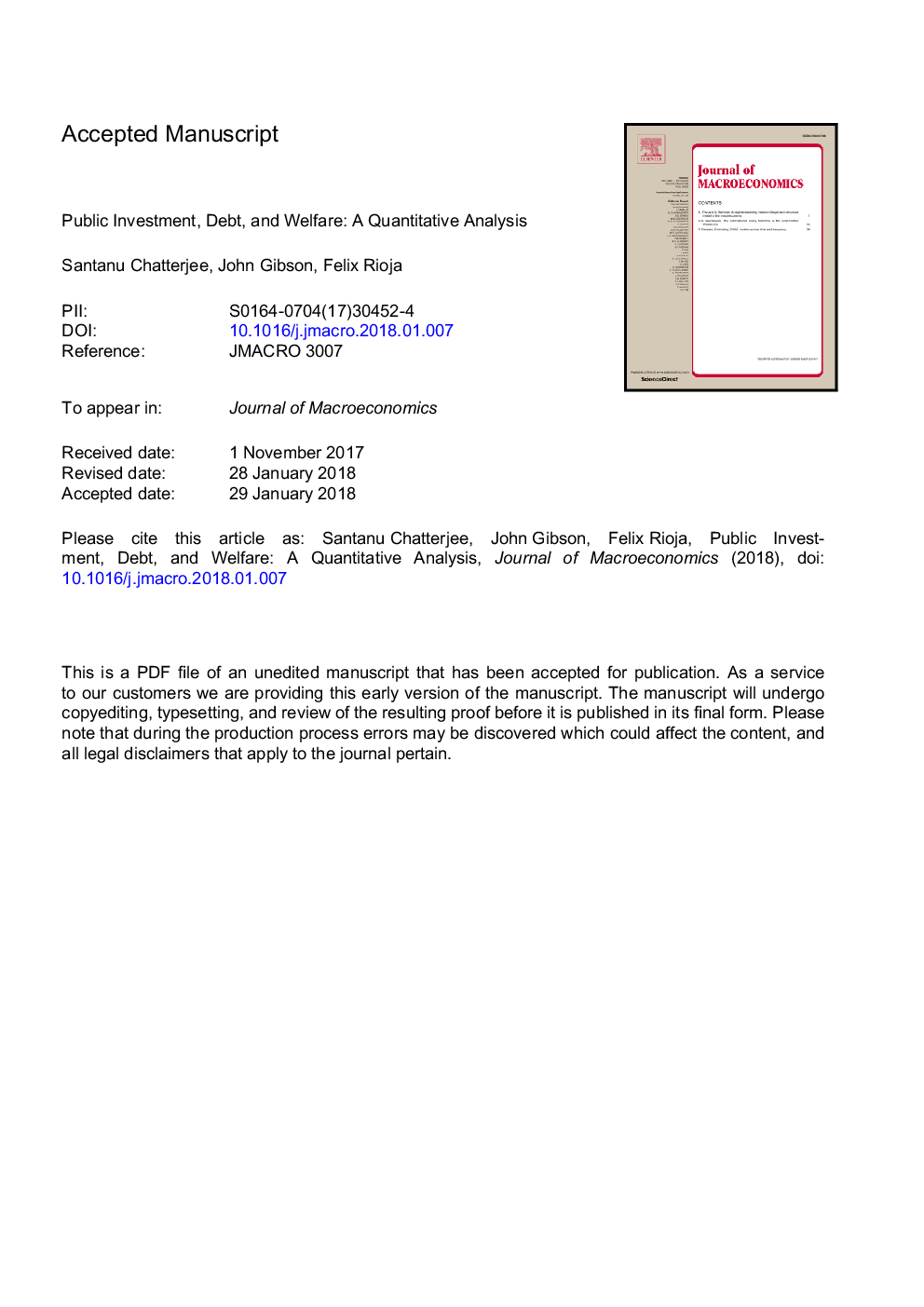| Article ID | Journal | Published Year | Pages | File Type |
|---|---|---|---|---|
| 7366780 | Journal of Macroeconomics | 2018 | 29 Pages |
Abstract
In this paper, we examine the relationship between infrastructure investment and economic welfare in the context of a heterogeneous agent, incomplete-markets economy. Using a quantitative model to match the key aggregate and distributional features of the U.S. economy over the period 1990-2015, we show that the welfare-maximizing share of public investment in GDP depends critically on whether one internalizes the transition path between stationary equilibria or not. When welfare changes are evaluated by only comparing long-run stationary equilibria, the model implies that the government should increase infrastructure investment above its average share of 4 percent of GDP in the data. However, once the transition path and short-run dynamics are internalized, welfare-maximization generates an intertemporal trade-off in the path of infrastructure spending: a short-run increase significantly above its observed share in the data, but a long-run decline below this share to satisfy the government's budget constraint.
Related Topics
Social Sciences and Humanities
Economics, Econometrics and Finance
Economics and Econometrics
Authors
Santanu Chatterjee, John Gibson, Felix Rioja,
